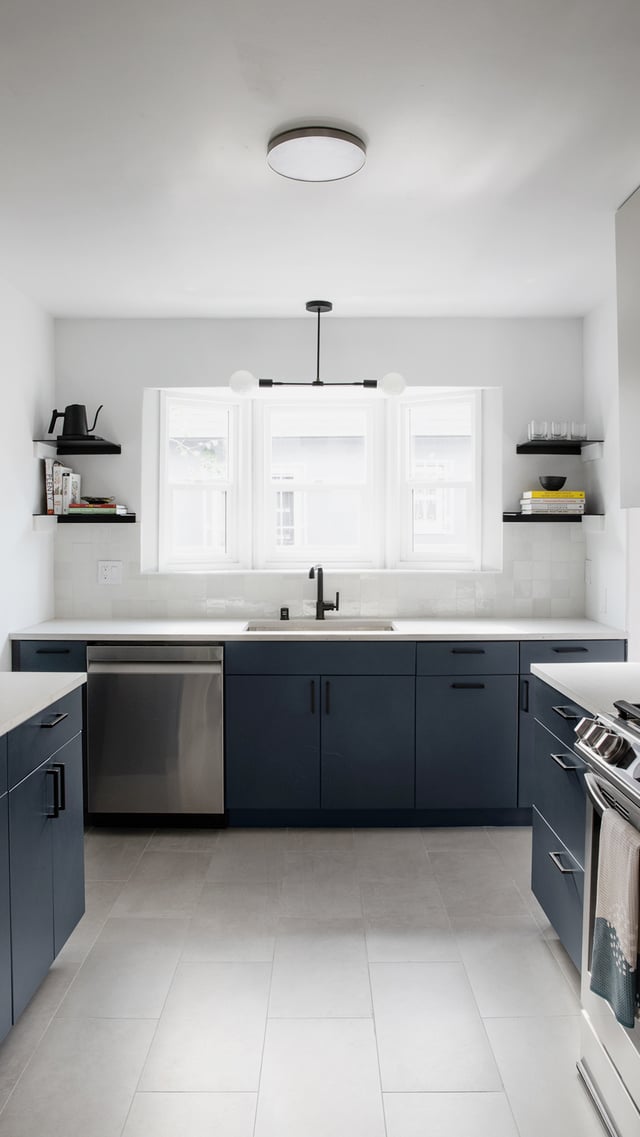
Cost
How Much Does a Home Renovation Cost in LA?
03.13.2025
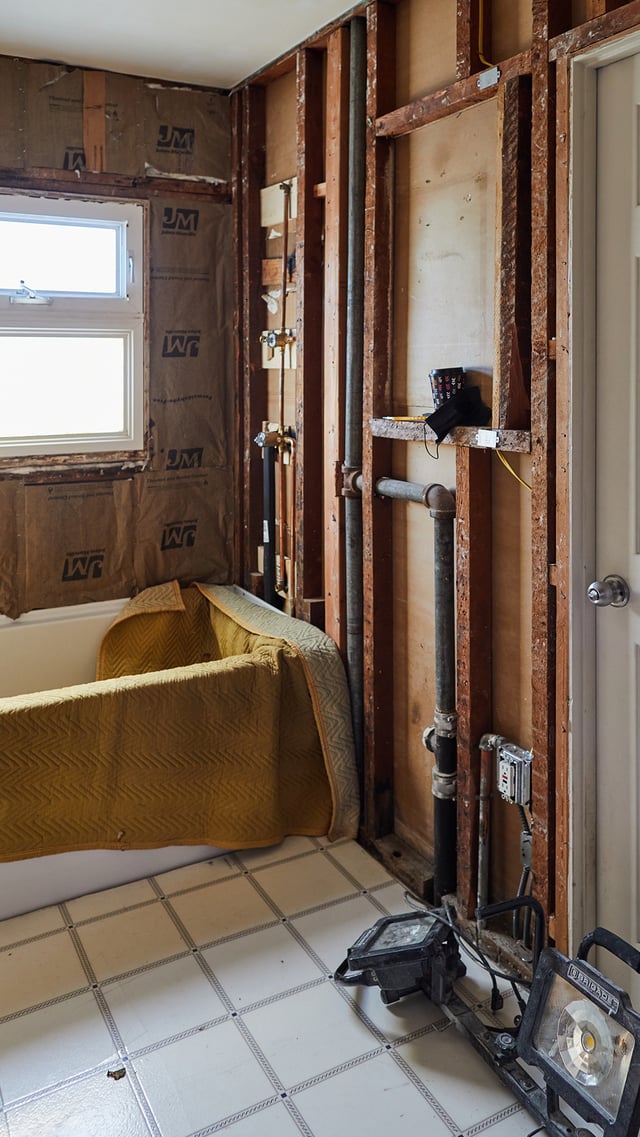
In This Article
Gut renovations allow homeowners to address outdated or inefficient interiors by completely overhauling the space to improve functionality and meet modern standards. In Los Angeles, gut renovations are a practical solution for tackling common issues in older or historic homes, such as outdated wiring, plumbing, and layout constraints. By stripping down to the structural framework and rebuilding with durable materials, homeowners achieve a more efficient, updated interior.
For Los Angeles homeowners, a gut renovation also provides the opportunity to make meaningful updates that match current needs. Whether restoring the integrity of an older property or reconfiguring a mid-century home for better flow, working with experienced Los Angeles renovation contractors can help homeowners create a home that better serves their daily lives and increases property value.
A gut renovation is a thorough remodeling process that strips a property’s interior down to its basic framework, removing walls, floors, ceilings, and fixtures. This approach allows for a full reset of the home’s layout and systems, including electrical, plumbing, and HVAC updates to meet current codes and standards.
In Los Angeles, gut renovations are often necessary for addressing major structural and design issues, especially in older or historic homes. Many homeowners choose this option to correct outdated wiring, inefficient layouts, and worn materials. Gut renovations offer the chance to rework the interior layout without being limited by the original design, allowing homeowners to make meaningful updates that suit their needs.
This process requires careful planning and the expertise of skilled Los Angeles remodeling companies, who guide homeowners through each stage and ensure code compliance. With their help, homeowners can take on the complexities of a gut renovation with confidence, knowing the end result will be functional, modern, and aligned with their goals.
Los Angeles involves removing all non-structural elements to address foundational issues, update old systems, and create a new layout. This includes stripping walls, floors, and fixtures, so contractors can replace outdated plumbing and electrical, adjust layouts, and prepare for any new additions.
Homeowners can use a full gut renovation to redesign the home’s layout to meet their needs. This type of project requires a strong investment of time and resources and is best handled by experienced Los Angeles contractors who understand the local regulations.
While a full gut renovation is a bigger commitment than other types of remodels, it can significantly increase the home’s functionality and value, particularly in sought-after Los Angeles neighborhoods or older homes needing modern updates.
Less extensive and focuses on specific areas of the home rather than the entire property. This approach is ideal for homeowners looking to upgrade key rooms, like the kitchen or bathroom, without committing to a full renovation.
For example, a partial renovation might involve updating a kitchen with new cabinetry, appliances, and countertops, while the rest of the home remains untouched.
The partial gut option can be more budget-friendly and completed in a shorter timeframe, making it a practical choice for those wanting impactful updates. However, a partial renovation may not provide a consistent look across the home, as only certain areas are modernized. Still, experienced Los Angeles contractors can help homeowners create noticeable improvements in high-use rooms like the kitchen and bathroom.
For those looking to improve the layout during a partial renovation, converting a tub to a shower is a popular option. Here are some useful tub-to-shower conversion ideas to explore.
Demolition is the first step in a gut renovation, where everything inside the home is taken down to the structural framework. Contractors remove walls, flooring, fixtures, cabinetry, and ceilings to clear the area for a complete remodel. In Los Angeles, homeowners often work with local remodeling companies for this part of the project, as careful planning is essential to avoid damaging structural components.
The timeline for demolition can range from a few days to a couple of weeks, based on the property size and extent of work. Contractors also adhere to Los Angeles regulations, as some neighborhoods have specific rules for debris disposal and noise restrictions. The goal is straightforward: safely remove old materials to prepare the property for rebuilding.
Safety protocols are essential during demolition to prevent accidents and protect workers and nearby properties. After demolition wraps up, the property is ready for the next steps in the renovation process.
After demolition, structural modifications come next. These changes often include reconfiguring the layout by adding or removing walls or expanding specific areas. In Los Angeles, such modifications typically require permits, especially if they impact load-bearing walls or the foundation. Contractors or structural engineers assess the property to ensure all changes meet city safety standards.
Structural work may involve reinforcing beams, adjusting layouts, and creating support for additions like open floor plans. Depending on the scale, this work can take several weeks, with each adjustment carefully made to keep the building stable. For a full gut renovation, structural changes allow homeowners to reshape the layout, whether by enlarging rooms, adding a second story, or creating a more modern flow.
Precision and expertise are key in structural work, making it important to hire experienced Los Angeles contractors. Incorrect structural changes can lead to costly repairs and safety concerns, so this work is best handled by professionals familiar with local regulations and construction risks.
Updating plumbing, electrical, and HVAC systems is critical in a gut renovation to bring the home up to safety and building standards. In Los Angeles, many older homes have aging wiring, plumbing, or HVAC systems that need replacement to meet current codes.
Plumbing updates involve replacing old pipes, installing new fixtures, and ensuring proper drainage and water flow. Electrical work typically includes rewiring, adding circuits, and upgrading the electrical panel to handle today’s energy demands. HVAC updates may include new ductwork, system upgrades, and zoning adjustments for better temperature control.
Licensed professionals are required to complete these updates, as Los Angeles permits are usually necessary, particularly for electrical work. Completion timelines can vary depending on the property size, and inspections help verify that all work meets local codes.
After the core systems are upgraded, insulation is installed to help control temperature and cut down on energy costs, keeping the home cooler in summer and warmer in winter.
With insulation in place, contractors move on to drywall, carefully measuring, cutting, and securing sheets to form the walls. This includes taping, mudding, and sanding to create smooth surfaces. In some cases, specialty drywall such as soundproof, moisture-resistant, or fire-rated types might be used based on the project needs.
Insulation and drywall are usually completed in about a week, setting up the home for the final finishing steps. Proper installation here has a lasting impact on indoor comfort and energy usage, making it a critical part of the gut renovation process in Los Angeles.
Finishing touches in a gut renovation include installing flooring, cabinetry, countertops, lighting, and other fixtures that complete each room’s look and functionality. Homeowners can select materials and finishes that match their personal style and daily needs.
In Los Angeles, choosing durable, practical materials is common, especially in high-traffic areas. Many homeowners also opt for sustainable or smart features for added convenience and efficiency. Precision and attention to detail are key, as these final additions shape the feel of the renovated home.
Experienced Los Angeles contractors ensure each element is installed accurately and to specification. For example, shower tiles can transform a bathroom’s appearance entirely, with options ranging from textured to patterned styles that create a fresh, updated look.
From textured to patterned options, take a look at our modern shower tile ideas for inspiration.
In Los Angeles, most gut renovations require specific permits, especially when making structural changes or installing new systems. Homeowners need to secure permits from the Los Angeles Department of Building and Safety (LADBS) to ensure all work meets local safety and building codes. Common permits include those for general building, electrical work, plumbing, and HVAC installations.
Zoning rules can also affect renovation plans. Certain Los Angeles neighborhoods have zoning restrictions that may limit building heights, determine setback distances, or require specific design elements to align with local standards.
Consulting with a Los Angeles renovation contractor or permit specialist can help homeowners understand these rules and handle the application process effectively. Since permit approvals may take several weeks or even months, starting early is important to avoid delays.
Renovating a historic home in Los Angeles comes with specific challenges. Homes with historic designations must follow guidelines to preserve their original features, and changes often require approval from the city’s Office of Historic Resources. Specialized contractors with experience in historic preservation can help ensure new work respects the original structure. Key considerations include using materials that match the original, maintaining the home’s exterior appearance, and preserving unique architectural details.
Code violations can lead to costly fines, delays, or the need to redo completed work. To avoid these issues, homeowners should work with licensed professionals who are familiar with Los Angeles building codes and secure all necessary permits. Consulting a local remodeling company experienced with Los Angeles codes helps ensure the renovation process is compliant from start to finish.
The cost of a gut renovation in Los Angeles can vary widely depending on the size of the property, the quality of materials used, and the scope of the project. On average, homeowners can expect to spend between $100 and $250 per square foot, with luxury finishes and high-end designs pushing the cost even higher. Factors like permits, labor, and local contractor rates also play a significant role in determining the overall expense. In Los Angeles, unique architectural styles and older homes with hidden structural issues often require additional attention, which can increase costs. Despite the higher price tag, a well-executed gut renovation can significantly boost property value and transform a dated space into a modern, customized home.
The planning and design phase is the foundation of a successful gut renovation, where all decisions and preparations are made to avoid costly changes later. This phase typically takes 1-3 months, depending on the complexity of the project and how quickly homeowners can make decisions.
During this time, homeowners work with designers or architects to create detailed floor plans, choose materials, and determine the overall aesthetic. This stage also involves budgeting, selecting a Los Angeles home renovation contractor, and submitting initial permit applications.
For homeowners with specific goals, careful planning in this stage ensures that the project aligns with their vision and budget. For bathroom projects specifically, timelines can vary. To get a sense of typical durations, see our guide on how long it takes to remodel a bathroom.
After planning, the renovation begins with demolition, stripping the home to its basic framework. This phase often takes 1-2 weeks, as walls, flooring, and non-structural elements are removed. Once the space is cleared, rough construction can start, addressing any structural changes, such as adding or removing walls.
Rough construction also includes reinforcing or altering load-bearing elements. This phase can take an additional 2-3 weeks, depending on the scope of changes. Completing demolition and rough construction prepares the home for new installations and updates.
Once structural changes are complete, licensed professionals update the core systems, including plumbing, electrical, and HVAC. This phase typically takes about 1-2 weeks, as each system is installed or upgraded to meet modern standards and local building codes.
In Los Angeles, older homes often have outdated systems that require extensive work, particularly if new fixtures, outlets, or HVAC zones are added. This step is critical for safety, energy efficiency, and functionality, as these core systems form the backbone of a comfortable home.
With systems in place, the next phase involves framing, installing drywall, and adding insulation. This phase usually takes 1-2 weeks, creating the structure of each room and preparing the space for finishing touches.
Insulation is especially important in Los Angeles, where energy efficiency can lead to long-term cost savings. Drywall installation requires attention to detail, with multiple layers of mudding and sanding to achieve a smooth finish.
Finishing work includes installing flooring, cabinetry, fixtures, paint, and other final elements that complete the aesthetic. This phase can take 2-4 weeks, depending on the level of customization and the availability of materials.
Finishing work is often the most satisfying part for homeowners, as they see their vision come to life. With the help of skilled Los Angeles renovation contractors, this stage ensures every detail is in place, from high-quality finishes to functional design elements.
The final step is inspections and sign-off from local authorities. Los Angeles inspectors verify that all work meets building codes, ensuring safety and compliance.
This phase usually takes a week or two, depending on the scheduling and completion of any necessary adjustments.
After passing inspection, the renovation is officially complete, and homeowners can begin enjoying their transformed space.
A successful gut renovation begins with a solid plan and clear goals. Homeowners should work closely with designers and contractors to define what they want from their renovation, including functionality, aesthetics, and budget. Setting realistic goals helps manage expectations and keeps the project on track, avoiding unnecessary stress or adjustments midway.
Safety and structural soundness should be at the forefront of any gut renovation. This involves evaluating the home’s foundation, load-bearing walls, and overall stability, especially in older Los Angeles homes.
Investing in structural upgrades, if necessary, ensures that the finished space will be safe, durable, and compliant with local codes. Structural integrity is non-negotiable and worth prioritizing from the start.
Choosing experienced professionals can make a huge difference in both the quality and efficiency of a gut renovation. Reputable Los Angeles home improvement experts bring specialized knowledge and local expertise, helping homeowners avoid costly mistakes and delays. From architects and designers to skilled contractors, experienced professionals provide guidance that aligns with both homeowner goals and building codes.
Unforeseen costs are common in any renovation, especially when dealing with older homes that may have hidden issues. Adding 10-20% to the initial budget as a buffer for unexpected expenses helps homeowners avoid financial strain.
Common surprises include outdated wiring, hidden water damage, or necessary structural adjustments. Planning for these contingencies provides peace of mind.
Investing in quality materials and finishes enhances the longevity and value of a renovation. From durable flooring to energy-efficient windows, high-quality elements stand up better to daily wear and help homeowners save on maintenance. Los Angeles renovation services often recommend materials that blend style and durability, maximizing both beauty and functionality.
Throughout the renovation, maintaining organized records of permits, receipts, and contracts is essential. This documentation not only ensures that the project complies with Los Angeles building codes but can also be helpful for resale value or insurance purposes. Keeping these records accessible is a small step that can save time and stress in the long run.
Gut renovations can take months to complete, so planning alternative living arrangements is crucial. Whether moving temporarily or setting up a comfortable area within the home, considering living logistics helps minimize disruption. Homeowners with families may need additional accommodations, making it wise to plan in advance for the length of the project.
Before signing off on a completed renovation, homeowners should schedule a final walk-through with their contractor. This step allows both parties to address any last-minute concerns, ensure quality workmanship, and confirm that all requested elements are in place. A final walk-through provides closure, helping homeowners feel confident and satisfied with their new space.
Unforeseen issues are common in gut renovations, especially in older Los Angeles homes. As walls are opened up and floors removed, contractors often discover hidden problems such as outdated wiring, plumbing leaks, mold, or structural damage.
These issues can disrupt timelines and increase costs, as they may require additional work to bring the home up to modern standards. For instance, outdated wiring can pose serious fire risks, making it essential to replace old electrical systems.
To minimize the impact of these surprises, homeowners should plan for a contingency budget (typically 10-20% of the total cost) and work with experienced Los Angeles remodeling contractors who are familiar with older properties. Hiring professionals skilled in identifying potential issues early can help mitigate unexpected costs and delays, ensuring a smoother renovation process.
Historic homes in Los Angeles present unique challenges during gut renovations. Preservation laws and restrictions often require homeowners to maintain certain architectural features, limiting the extent of changes.
These homes may have materials or design elements that are no longer commonly used, making replacement or repair more complicated and costly. For instance, restoring original woodwork, tiles, or fixtures may require sourcing specialized materials or working with artisans familiar with preservation techniques.
To track these challenges, homeowners should consult with contractors who have experience in historic home renovation. Knowledgeable contractors can help manage compliance with preservation guidelines and propose creative solutions to preserve the home’s character while updating its functionality and safety.
Renovation delays and extra costs are frequent challenges in gut renovations. Delays can stem from permit approvals, material shortages, unexpected structural issues, or unanticipated design changes.
Costs may increase if adjustments are needed mid-project, especially when dealing with unforeseen issues in older homes. These delays and cost overruns can cause stress and disrupt schedules, particularly if homeowners have made living arrangements based on the initial timeline.
The best way to manage these challenges is through proactive planning. Homeowners should work closely with their contractors to establish a realistic timeline, prepare a contingency budget, and stay flexible. Open communication with the contractor is essential to adapt to changes efficiently, helping to keep the project on track as much as possible.
Choosing the right contractor is a key step in your gut renovation. With the right expertise, a contractor can streamline the process and help avoid unnecessary costs. Here’s a guide to finding the right contractor for your Los Angeles renovation:
Following these steps will help you find a qualified contractor who aligns with your renovation goals and expectations, giving you confidence in a smooth project from start to finish.
Learn More: What Is a Contractor Vetting Process? Here’s How We Do it
After the renovation, a final inspection helps confirm that all work meets expectations and city codes. During this walk-through, homeowners and contractors review each room, checking that fixtures, finishes, doors, and other elements function properly and align with the agreed plan. Contractors may also arrange building code inspections to confirm compliance with safety standards, especially for electrical, plumbing, and structural work.
Creating a checklist of items to inspect can ensure that nothing is missed. Addressing any last adjustments during this stage is important to ensure satisfaction before making final payments. A thorough inspection lets homeowners know their renovation meets the standards they expected.
Routine maintenance keeps a renovated home in good condition. Homeowners should set up a maintenance plan that includes regular cleaning, checking plumbing and HVAC systems, and addressing minor wear before it escalates. Keeping maintenance records is useful for tracking long-term upkeep and repairs.
For example, scheduling HVAC inspections every 6-12 months keeps the system running smoothly, and checking plumbing for leaks can prevent larger issues. High-use areas like kitchens and bathrooms also benefit from regular upkeep. A proactive approach to maintenance helps homeowners enjoy the value of their Los Angeles renovation for years.
How do you choose the right contractor for a gut renovation in Los Angeles?
Do you need an architect for a gut renovation?
What are the hidden costs of a gut renovation?
How do you manage living arrangements during a gut renovation?
What’s the best time of year to start a gut renovation in Los Angeles?
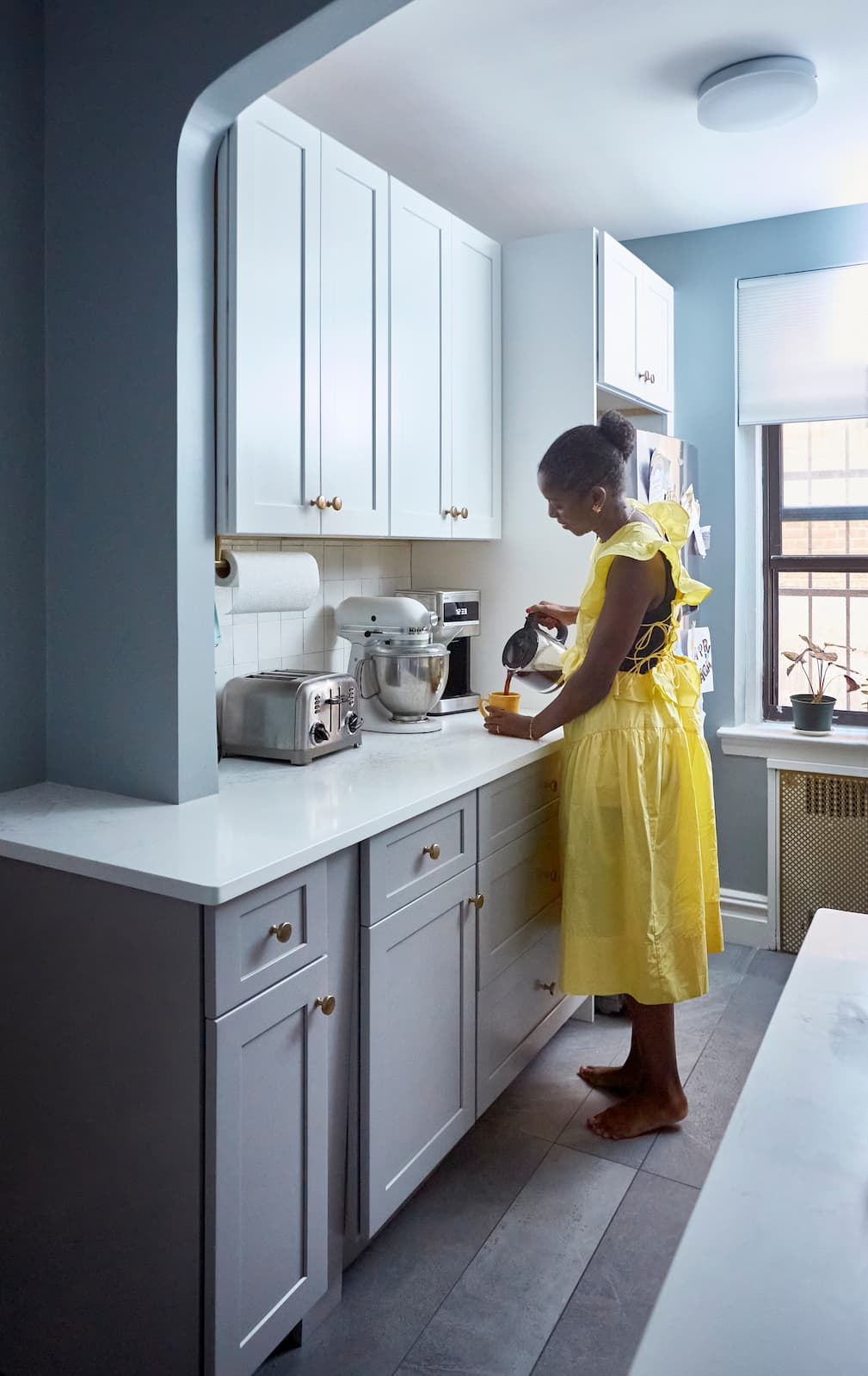
Renovate confidently with Block
Easily compare quotes from top quality contractors, and get peace of mind with warranty & price protections.
Thousands of homeowners have renovated with Block

4.5 Stars (100+)

4.7 Stars (100+)

4.5 Stars (75+)

Cost
How Much Does a Home Renovation Cost in LA?
03.13.2025

Los Angeles
Doing a Gut Renovation in Los Angeles
11.11.2024
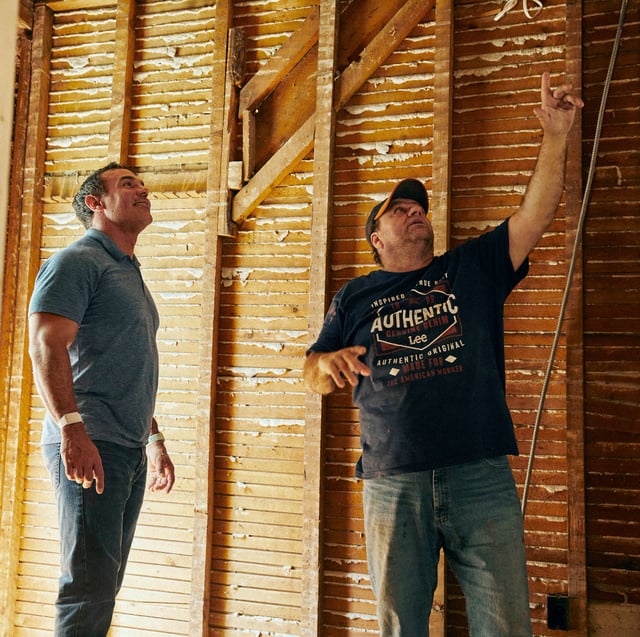
Property Damage
Seismic Retrofitting and Remodeling Your Home With Earthquake Safety In Mind
04.06.2024
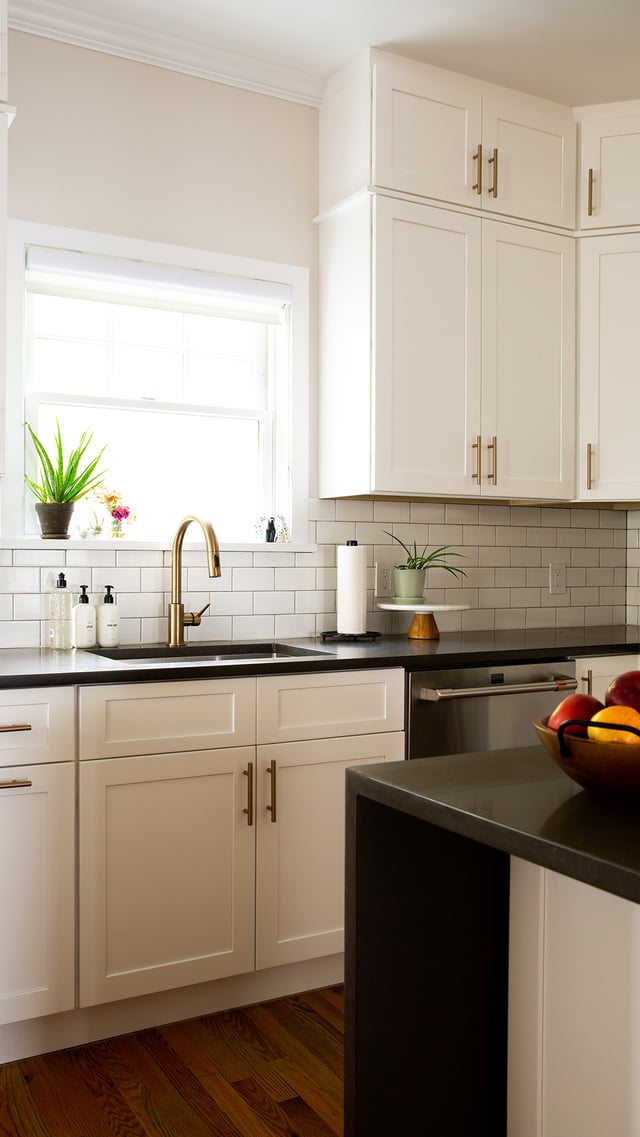
Kitchen
A Guide to Remodeling a Kitchen in Santa Monica | Block Guides
09.29.2021
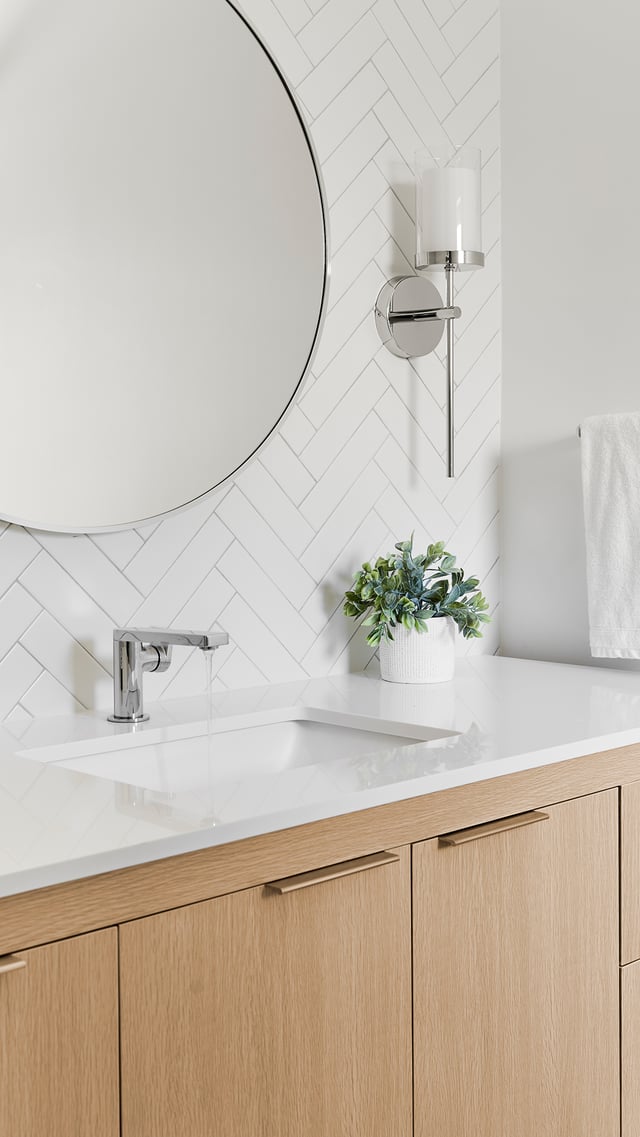
Bathroom
How to Renovate a Bathroom in Santa Monica | Block Guides
08.19.2021
Renovate confidently